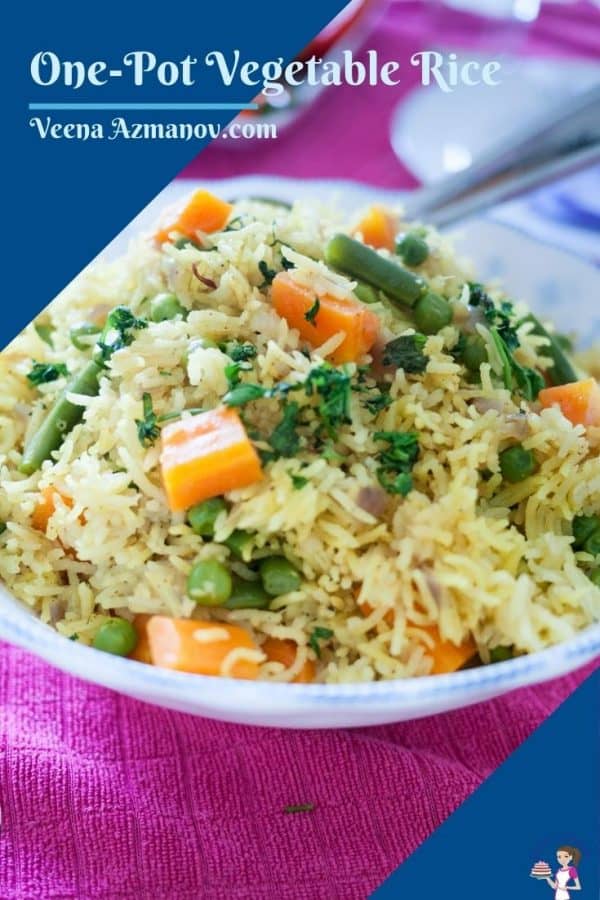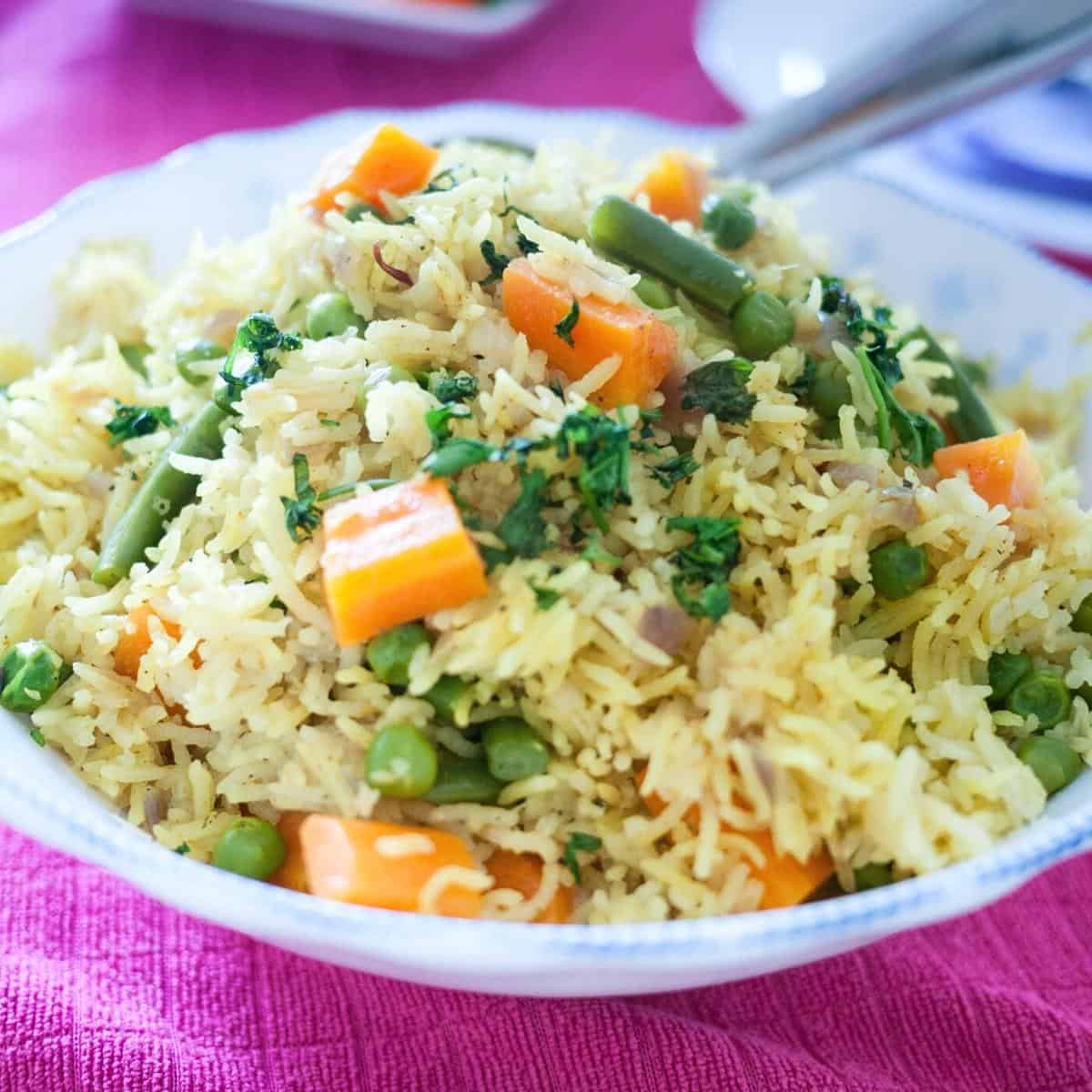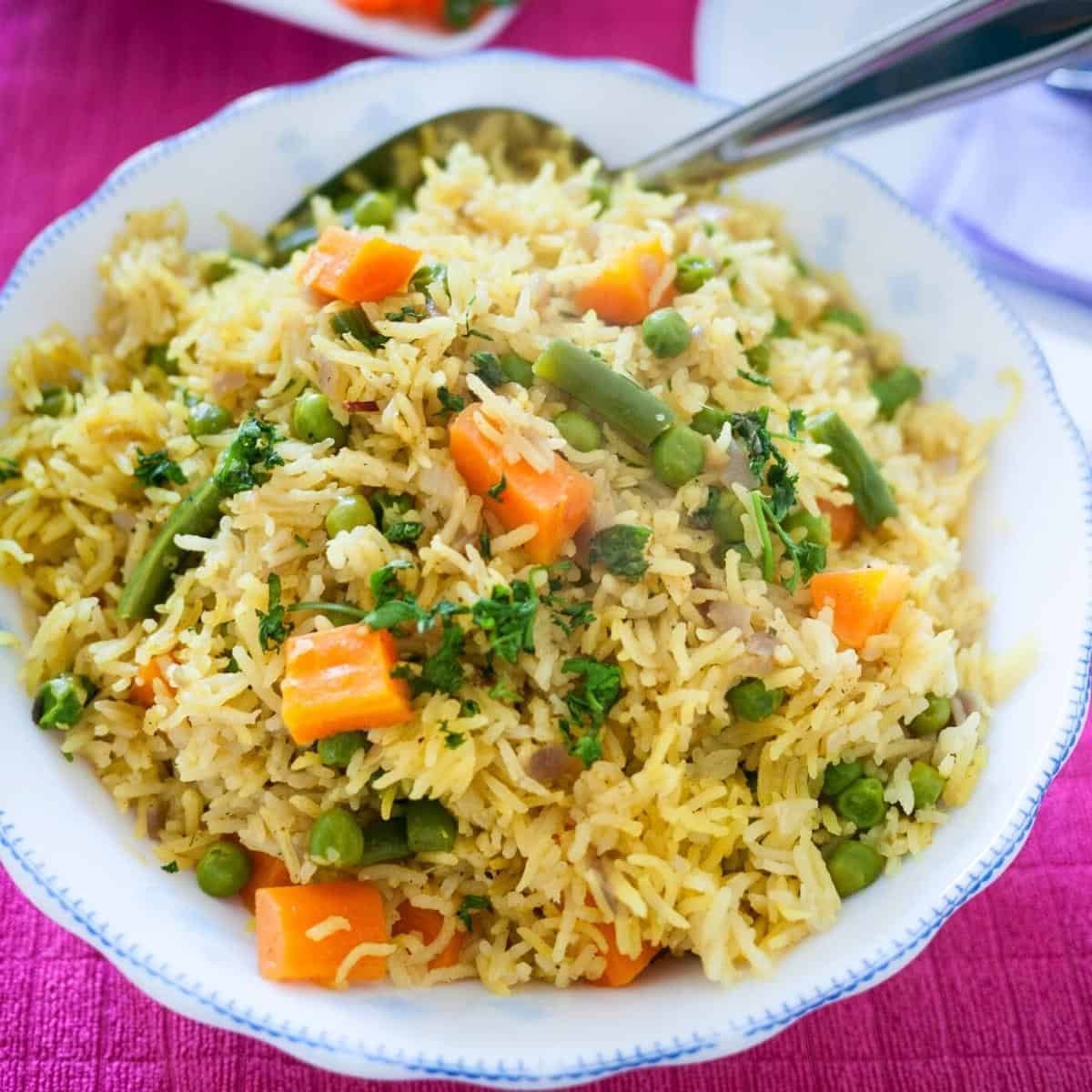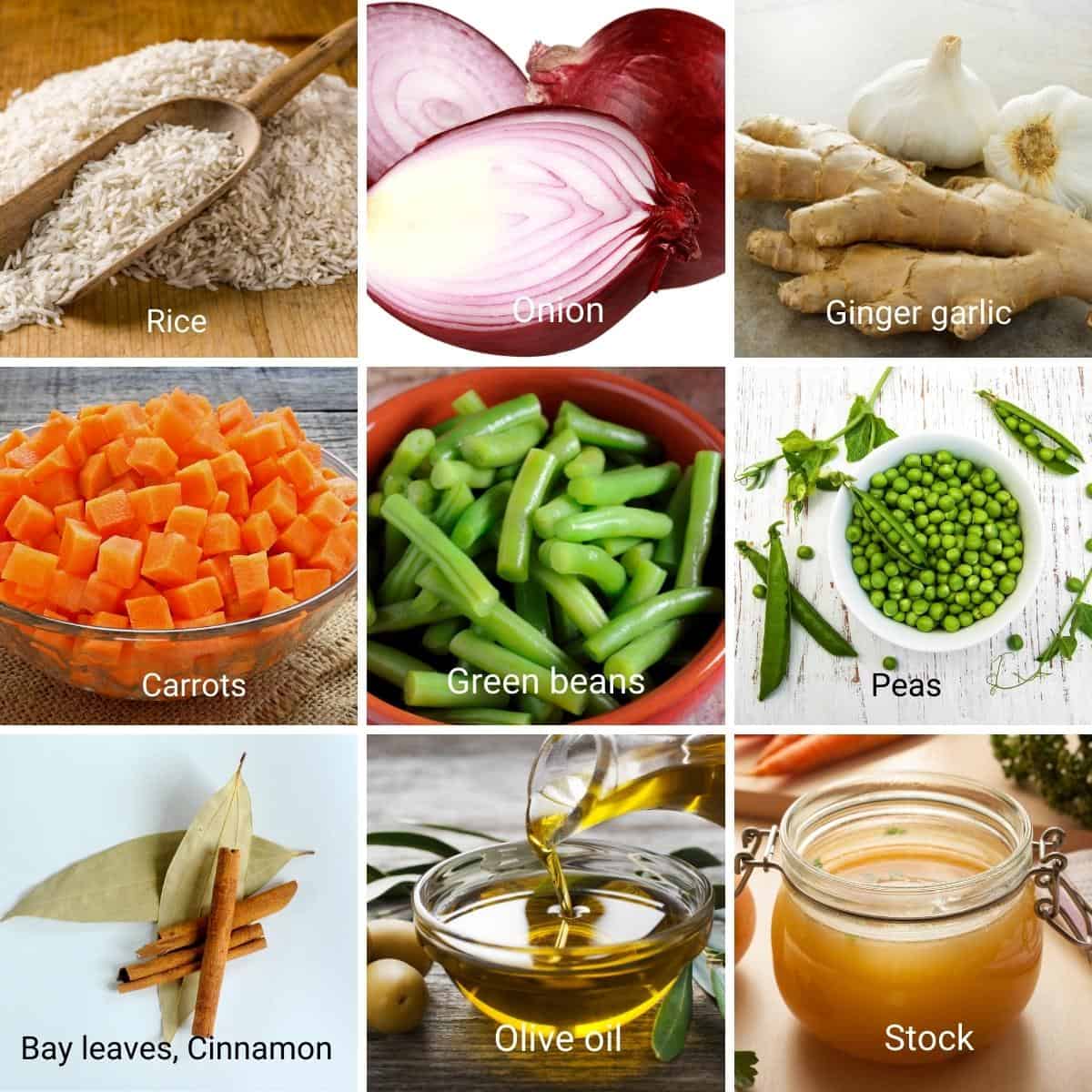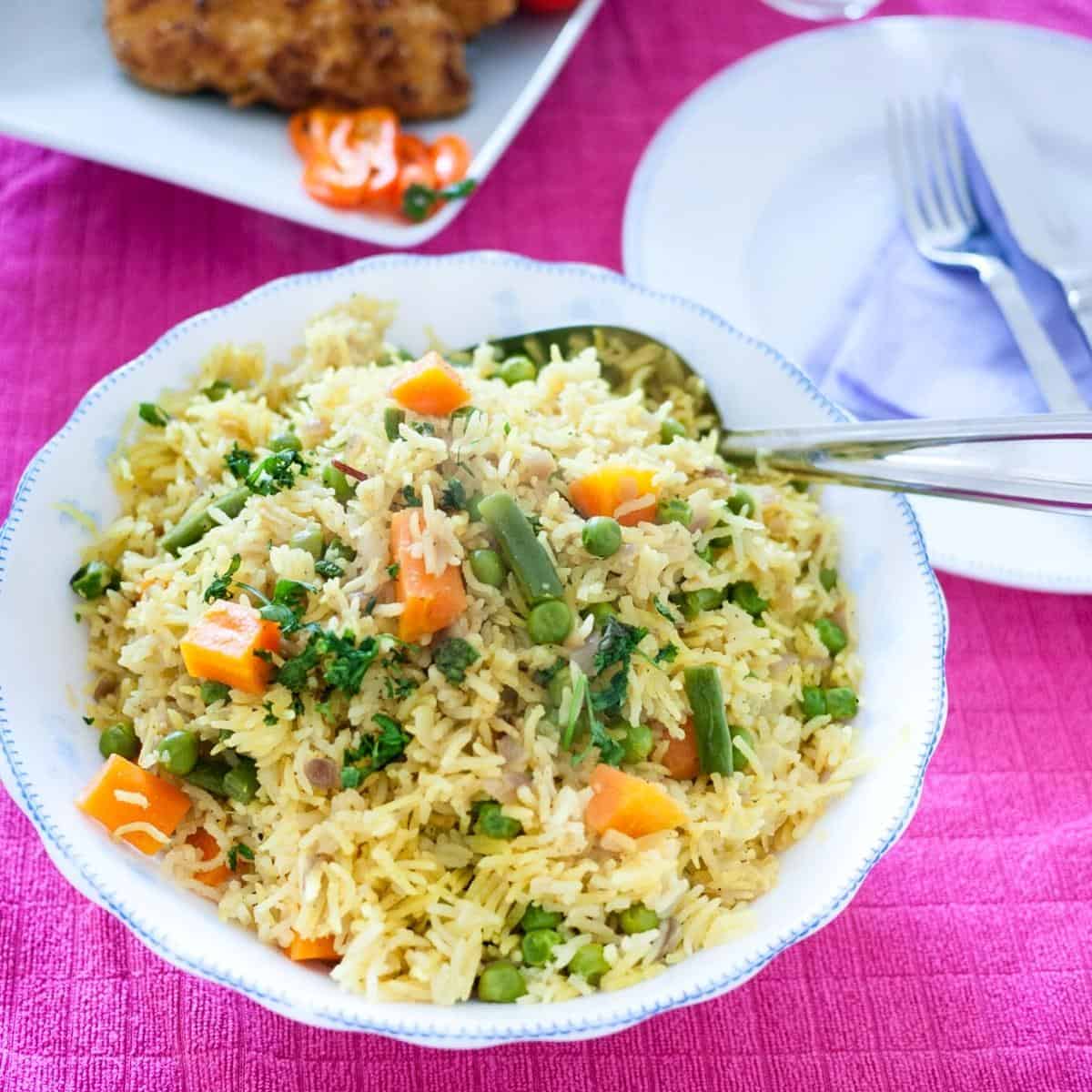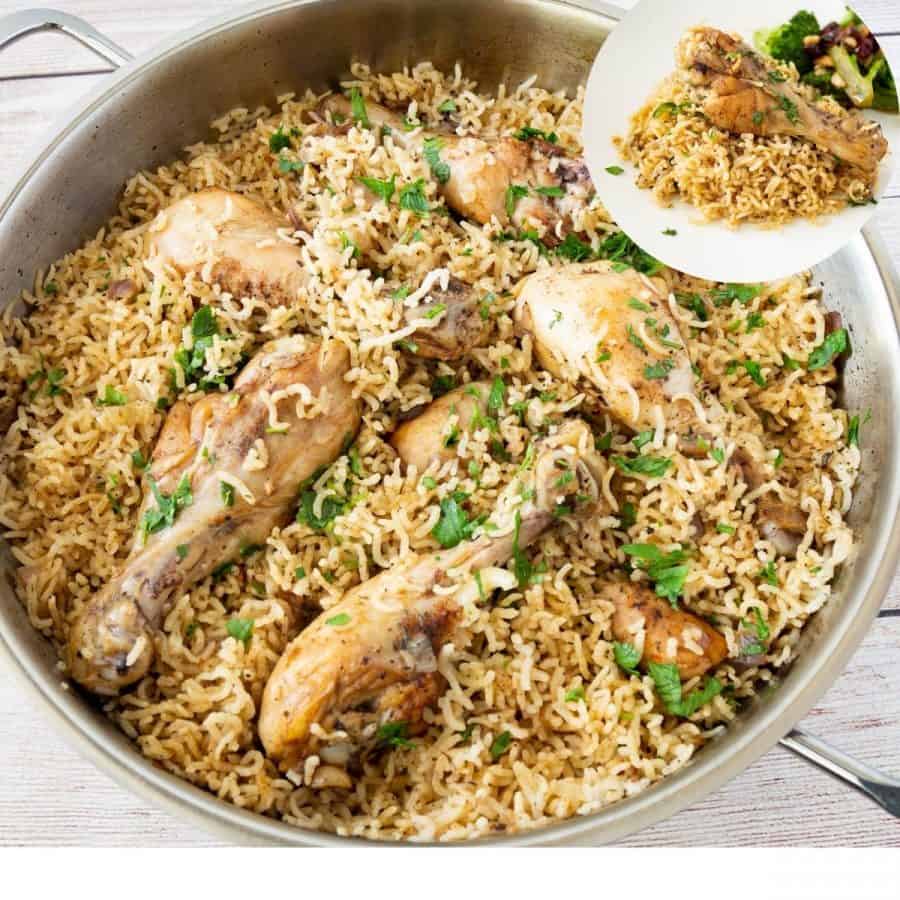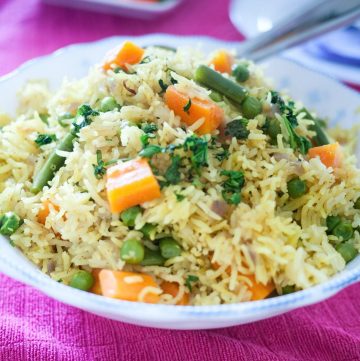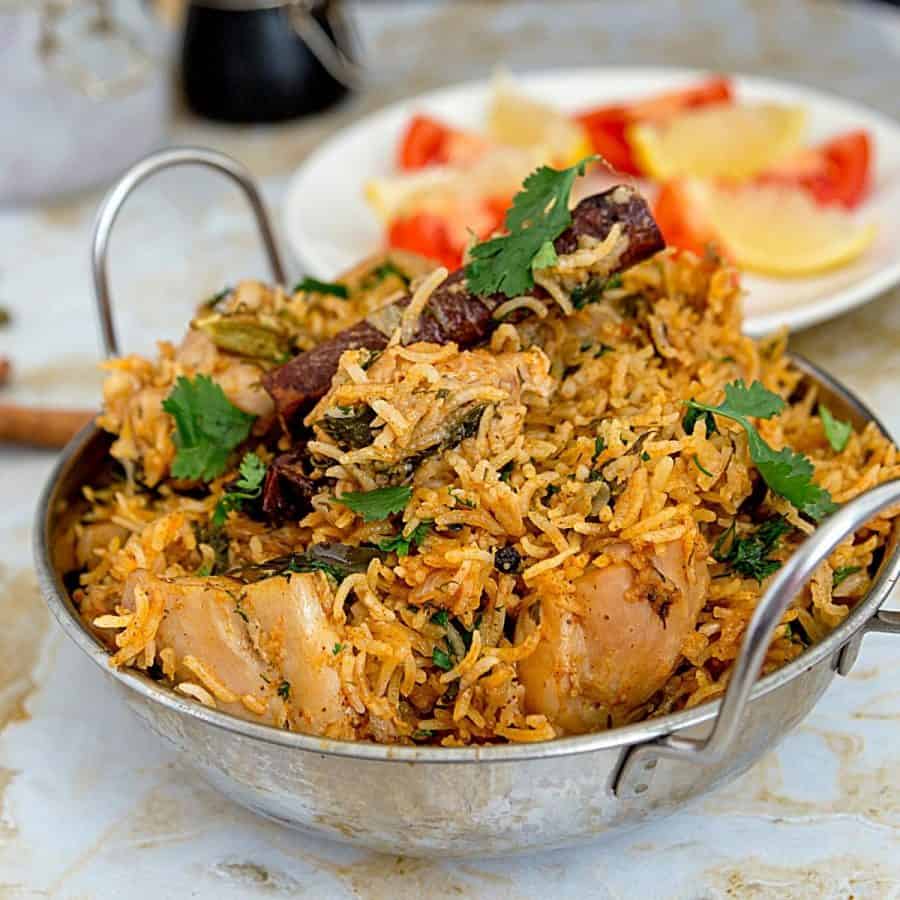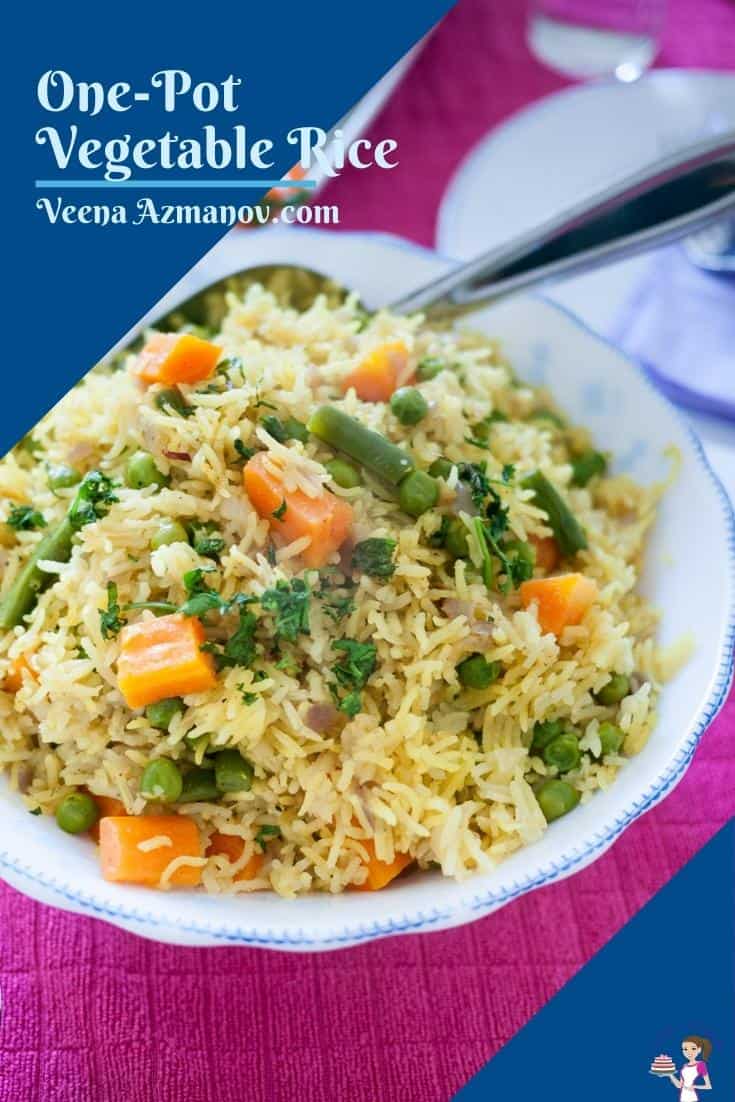Do you know those days when you want something delicious but still light? We often have that at our home. I usually decide that once or twice a week we must eat a light meal. Which means no meat, no fish, and no cheesy stuff either. This is one of my kids’ absolute favorite rice dishes since they were little. My Aadi will eat this rice without any meat or other main courses.
Step-by-step: One pot vegetable rice
If using basmati or Asian rice it’s best to wash and soak for 30 mins before cooking. Drain and set aside.Pro tip – soaking the rice makes for even cooking as well as makes it light and fluffy. In a skillet, saute’ onions, garlic, and ginger in oil for about 2 minutes until translucent.Pro tip – Use a wide skillet for cooking rice to ensure even cooking. Add cinnamon, bay leaves, carrots, peas, and green beans – saute a minute more.Pro tip – we want the veggies to coat with the oil. If using frozen veggies do not cook them for too long. Next, add the rice and cook on medium heat for two minutes so the rice is well coated with the oil.Pro tip– sauteing the rice will coat every grain with oil and lightly toast it. This makes very fluffy rice. Add stock, and fresh herbs – and stir well. Season with salt and pepper. Bring to a boil, then lower the heat to a low simmer and cover with a lid. Cook on low for 15 minutes undisturbed. After 15 minutes – switch the heat off and let the rice rest for 10 minutes.Pro tip – the rice will continue to cook in the residue heat making it just right. When ready to serve – fluff the rice with a fork. Garnish with more fresh herbs. I like to serve it on its own with raita (recipe below) or along with the main course.
Choosing the right vegetables for pulav
You can opt for a medley of colorful vegetables like carrots, peas, bell peppers, and corn, or focus on a specific combination that complements the spices and flavors you’ve chosen for your pulav. The key is to select vegetables that not only taste delicious but also retain their texture and shape during the cooking process. To ensure that your vegetables don’t turn mushy or overcook, it’s important to consider their cooking times. Vegetables like carrots and bell peppers take longer to cook, while peas and corn require less time. It’s a good idea to chop the vegetables into uniform sizes so they cook evenly. This will result in a pulav that not only looks visually appealing but also has a satisfying mix of textures. Another factor to consider is the flavor profile of the vegetables. Some vegetables have a subtle taste that can enhance the overall flavor of the pulav, while others have a stronger flavor that can overpower the dish if not used judiciously. For example, if you’re using onions and garlic in your pulav, you may want to balance them with milder vegetables like mushrooms or green beans. On the other hand, if you’re looking for a bold and robust flavor, you can add vegetables like cauliflower or cabbage. Lastly, don’t be afraid to get creative with your vegetable choices. Pulav is a versatile dish that can accommodate a wide range of vegetables. Consider adding unique ingredients like broccoli, zucchini, or even roasted eggplant to bring a twist to your pulav. The key is to experiment and find combinations that appeal to your taste buds.
Rice Pilaf or Chicken with Rice Pilaf Turmeric Rice with Chicken and Peas Chicken and Rice Skillet Coconut Turmeric Rice Skillet Shrimp with Rice See all rice recipes
Frequently asked questions
Did you LIKE this recipe? Save it for later. You can find my recipes on Pinterest. Follow me on Facebook, Twitter, and Instagram.Subscribe, and I’ll send you new recipes right to your inbox. Thank you for sharing - Save for later


